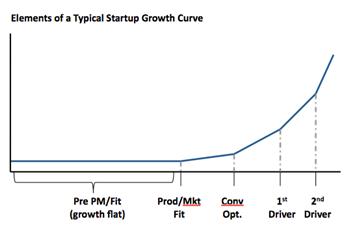Wojceich Gryc has an interesting post on the policies that he’d like to see the federal government implement to improve the startup ecosystem. The 5 key points are:
- Market Access Tax Credits
- Legal/Tax Advice for Market Access
- Sales-Oriented Startup Accelerators
- Global Benchmarks
- Global Branding
Not a bad list of things that could improve the startup ecosystem. However, I’m not sure they are not all necessarily things for consideration as governmental policy. Specifically, I have issues with 2, 3 and 4.
Legal/Tax Advice for Market Access
Entering new markets, particularly foreign markets, can be daunting. There are legal, regulatory, tax and other questions. And I would argue that the Canadian government already has a Crown corporation, Export Development Corporation, dedicated at lead to helping manage the financial risk of accessing new markets. Is there a step-by-step guide for emerging technology companies? (Let me know if you find one). There are access to the Trade Commissioners who continue to have a strong presence in the Bay area, New York and Austin, Texas.
The remaining advice and guidance about legal, regulatory and tax risks on entering new markets is provided by third-party services firms. I’ve worked with the teams at KPMG, Deloitte, PwC and others on Canadian/US tax law and the implications for my firm. Also advice from Canadian and US counsel including BennettJones, CognitionLLP, LabergeWeinstein, Fenwick & West, Wilson Sonsini and others. You need to find lawyers and accountants that have experience with the risks and solutions and can provide you cost-effective advice.
Sales-Oriented Startup Accelerators
An accelerator feels like a red herring to me. Wojceich is 100% correct, companies should focus on focus on key traction metrics (see Getting Traction and Funding, Valuation and Accretive Milestones) including sales/revenue. But the idea that an accelubator is going to help you focus on driving realistic forecasts, and achieving milestones or traction feels lazy/wrong/not the right approach.
A startup is a temporary organization used to search for a repeatable and scalable business model. – Steve Blank
Depending on the type of business model, it can be okay to delay monetization. But if your business model is to sell software or software-as-a-service you need to determine if people are willing to pay you for it. I would argue rather than giving up 7% of company to an accelubator, you’re probably better to read David Skok’s Building a Sales & Marketing Machine and try to recruit an advisor that has experience selling to your idealized target segment. There are a lot of great sales advisors/board members including: John MacDonald, Howard Gwin, Andy Aicklen, etc. Most are accessible. Are they interested in working with you? On your business? Maybe, you need to convince them you’ve built something worth their time and social capital.
Global Benchmarks
Who gives a shit about where we fall on global benchmarks? It’s probably relevant as part of the next point, Global Branding, but I just can’t imagine that an understanding of the global startup benchmarks matters. Larger investment, more successful companies and exits probably have a larger impact on the overall startup ecosystem. It would be more interesting to see the creation of a Kaufmann Foundation with a focus on entrepreneurship.
“we develop and support programs that provide entrepreneurs with the education, tools, skills and connections they need to start and grow businesses. We also work to create a more entrepreneur-friendly environment, including lowering barriers to success and raising awareness of the important role entrepreneurs play in the economy” – Kaufmann Foundation
I’m unclear why federal, provincial or municipal policy should be based on a set of rankings provided by a private corporation. It just feels ill-informed view of the role of government and policy in managing the lives of citizens. But I am not a policy wonk and my understanding on the creation and execution of policy in the administrative branches of government approximates zero. (Take this free opinion for what it is worth, or at least what you paid for it).
The Greener Grass
It’s great to see entrepreneurs in the trenches think about the system and the support they need. It’s a honest view of the things that would help entrepreneurs improve their corporate performance, reduce their expenditures and risks.
I love the idea of a similar SR&ED tax credit for market access. Supporting companies as they experiment with distribution and monetization models is a great idea. Plus improving the Canadian brand through Startup Visa, Maple Syrup Mafia, The C100, and other activities is an amazing activity. It builds on the efforts that we as individual founders to support the ecosystem. Focusing on traction including customer acquisition, revenue growth and building a scalable business., I love that too. Using global metrics as a baseline to evaluate your business (see StartupCompass’ Navigating your Startup to Success) should quickly give entrepreneurs both the measures and the desired outcomes to compare against.
I don’t think it is going to be government policy changes, it is going to be founders and startups building successful companies that will ultimately improve the ecosystem.
Photo Credit: Photo by Kris Krug ![]()
![]() Some rights reserved by kriskrug
Some rights reserved by kriskrug






